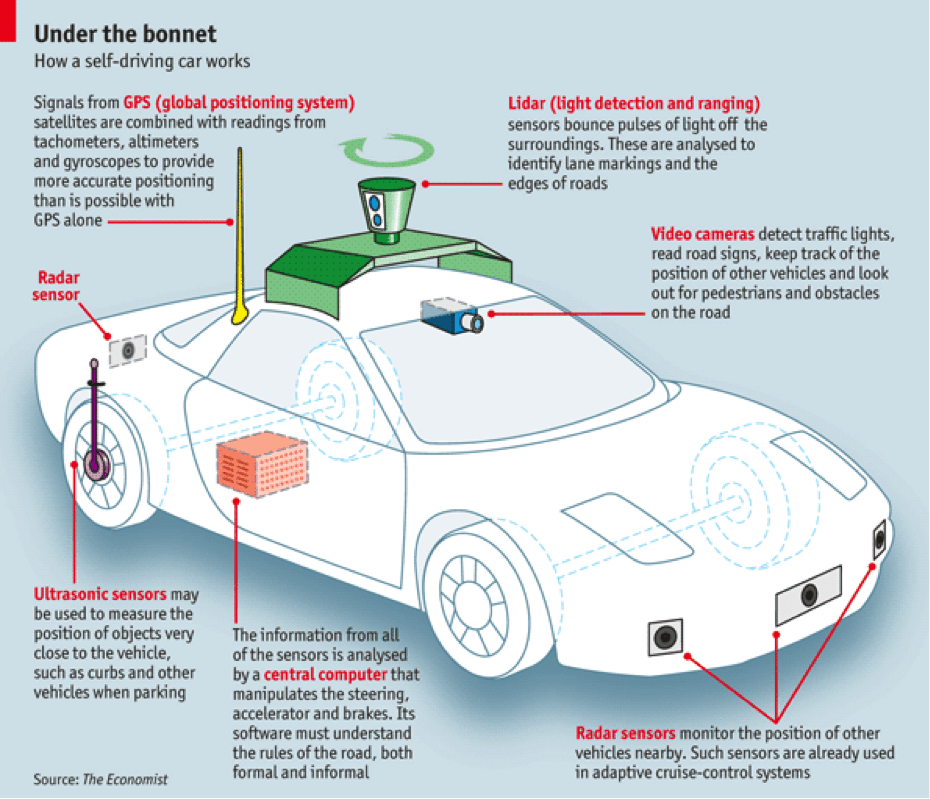The purpose of the tire pressure monitoring system (TPMS) in your vehicle is to warn you that at least one or more tires are significantly under-inflated, possibly creating unsafe driving conditions. The TPMS low tire pressure indicator is a yellow symbol that illuminates on the dashboard instrument panel in the shape of a tire cross-section (that resembles a horseshoe) with an exclamation point.
That indicator light in your vehicle has a history. It’s a history rooted in years of uncertainty about proper tire pressure and many serious car accidents that might have been avoided had drivers known their air pressure was low. Even now, it’s estimated that a substantial number of vehicles hit the road each day with underinflated tires. However, proper tire maintenance with the aid of a TPMS can and does help prevent many serious accidents.
Before this indicator light became commonplace, knowing whether your air pressure had reached unsafe levels meant getting out, crouching down, and using a tire gauge. With few exceptions, this was the only pressure-checking tool ordinary consumers had at their disposal.
Then, in response to a surge in accidents due to underinflated tires, the US government passed the Transportation Recall Enhancement, Accountability, and Documentation (TREAD) Act. One of the outcomes of this legislation is that most vehicles sold in the United States since 2007 include a tire pressure monitoring system of some kind.
Not every TPMS works the same way. The illumination of the low tire pressure indicator represents the final step in the process of either an indirect TPMS or a direct TPMS.
An indirect TPMS typically relies on wheel speed sensors that the anti-lock brake system uses. These sensors measure the rate of revolution each wheel is making and can be used by on-board computer systems to compare with each other and to other vehicle operation data such as speed.
Based on the rate of revolution of each wheel, the computer can interpret the relative size of the tires on your vehicle.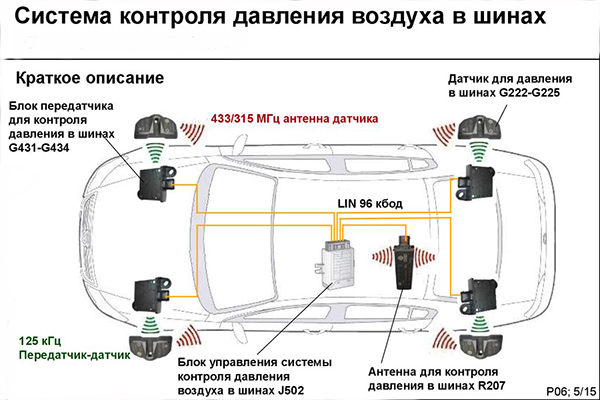 When a wheel starts spinning faster than expected, the computer calculates that the tire is underinflated and alert the driver accordingly.
When a wheel starts spinning faster than expected, the computer calculates that the tire is underinflated and alert the driver accordingly.
So, an indirect tire pressure monitoring system doesn’t actually measure tire pressure. It’s not electronically processing the same kind of measurement you might see with a tire gauge. Instead, an indirect tire pressure monitor simply measures how fast your tires are rotating and sends signals to the computer that will actuate the indicator light when something in the rotation seems amiss.
-- Relatively inexpensive compared to a direct TPMS
-- Requires less programming/maintenance over the years than a direct TPMS
-- Less overall installation maintenance than its direct counterpart
-- May become inaccurate if you purchase a bigger or smaller tire
-- May be unreliable when tires are unevenly worn
-- Must be reset after properly inflating every tire
-- Must be reset after routine tire rotation
Direct TPMS uses pressure monitoring sensors within each tire that monitor specific pressure levels – not just wheel revolution data from the anti-lock brake system.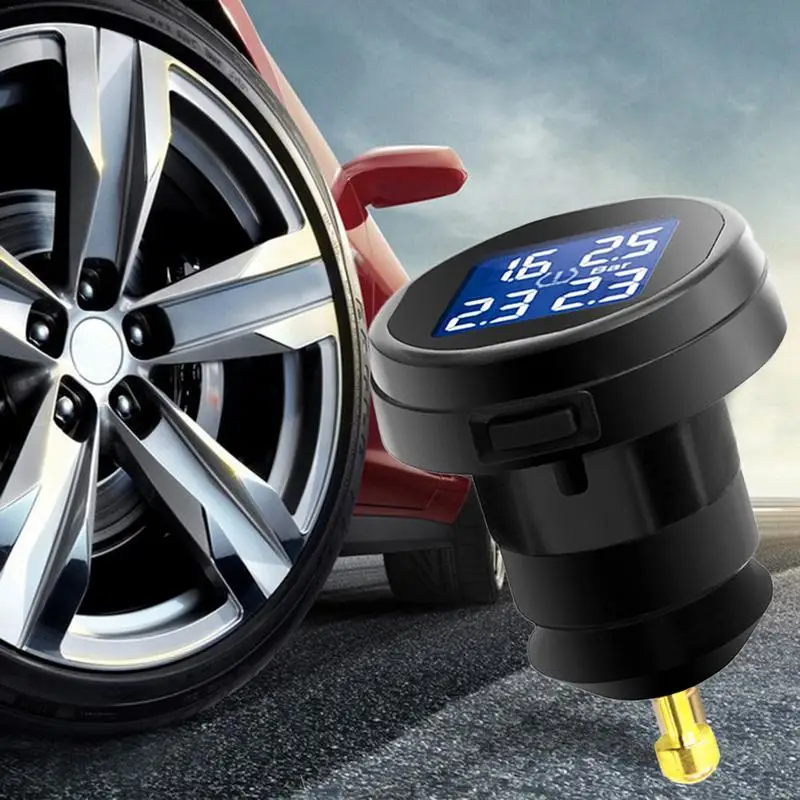
Sensors in a direct TPMS may even provide tire temperature readings. The direct tire pressure monitoring system sends all of this data to a centralized control module where it’s analyzed, interpreted, and, if tire pressure is lower than it should be, transmitted directly to your dashboard where the indicator light illuminates. A direct tire pressure monitor usually sends all of this data wirelessly. Each sensor has a unique serial number. This is how the system not only distinguishes between itself and systems on other vehicles, but also among pressure readings for each individual tire.
Many manufacturers use proprietary technology for these highly specialized systems, so replacing a TPMS in a way that’s consistent and compatible with your vehicle will require an experienced, knowledgeable technician.
-- Deliver actual tire pressure readings from inside the tire
-- Not prone to inaccuracies because of tire rotations or tire replacements
-- Simple resynchronization after tire rotation or tire replacements
-- Batteries inside the sensors usually last for about a decade.
-- May be included in a vehicle’s spare tire
-- More expensive overall than an indirect TPMS
-- Though simple, resynchronization may require costly tools.
-- Battery rarely serviceable; if the battery is drained, the whole sensor must be changed.
-- Proprietary systems make installation, service, and replacement confusing for consumers and auto shops.
-- Sensors are susceptible to damage during mounting/demounting
Although the methods may be different, both systems serve the same purpose and activate the same indicator light. Even though a TPMS can deliver accurate alerts when properly maintained, it’s not a replacement for manual air pressure checks, consider it just another item in your car maintenance toolbox.
There’s never a good time for a flat. That’s why Bridgestone DriveGuard tires are masterfully engineered to keep you moving for up to 50 miles at speeds up to 50 MPH without disruption.
There’s never a good time for a flat. That’s why Bridgestone DriveGuard tires are masterfully engineered to keep you moving for up to 50 miles at speeds up to 50 MPH without disruption.
See Details Find Your Fit
The Tire Pressure Monitoring System (TMPS) is an electronic system in your vehicle that monitors your tire air pressure and alerts you when it falls dangerously low.
To help drivers recognize the importance of tire pressure safety and maintenance, Congress passed the TREAD act, which requires most vehicles made after 2006 to be TPMS–equipped.
There are two different types of systems being used today: Direct TPMS and Indirect TPMS.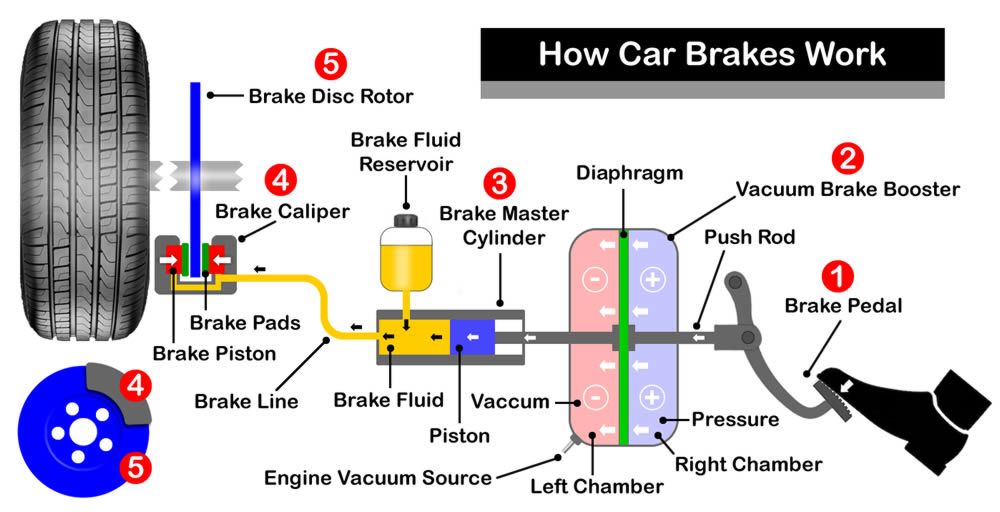
Direct TPMS uses a sensor mounted in the wheel to measure air pressure in each tire. When air pressure drops 25% below the manufacturer’s recommended level, the sensor transmits that information to your car’s computer system and triggers your dashboard indicator light.
Indirect TPMS works with your car’s Antilock Braking System’s (ABS) wheel speed sensors. If a tire’s pressure is low, it will roll at a different wheel speed than the other tires. This information is detected by your car’s computer system, which triggers the dashboard indicator light.
TPMS notifies you when your vehicle’s tire pressure is low or is going flat. By helping you maintain proper tire pressure, TPMS can increase your safety on the road by improving your vehicle’s handling, decreasing tire wear, reducing braking distance and bettering fuel economy.
Your vehicle has TPMS if the "low tire pressure" warning light appears on your dash when the key is turned to the "on" position.
Check the air pressure in your tires and inflate any tire that is low (according to the manufacturer’s recommendation). When the tire is at the appropriate pressure, the indicator light should go off.
If necessary, replace the tire with your spare tire and visit your local Tires Plus store for needed repairs or replacement. They’ll check your vehicle’s tire pressure and perform a systems test on all of your tire sensors to diagnose the problem. Once our technicians address your vehicle’s tire needs, they’ll then suggest the proper maintenance to get you back on the road safely.
Direct TPMS equipped tires cost slightly more to maintain than non–equipped tires because proper care requires extra parts and labor. The valve service kit, which includes the valve core, cap, nut and o–ring (seal), must always be replaced when a tire is dismounted for service or replacement.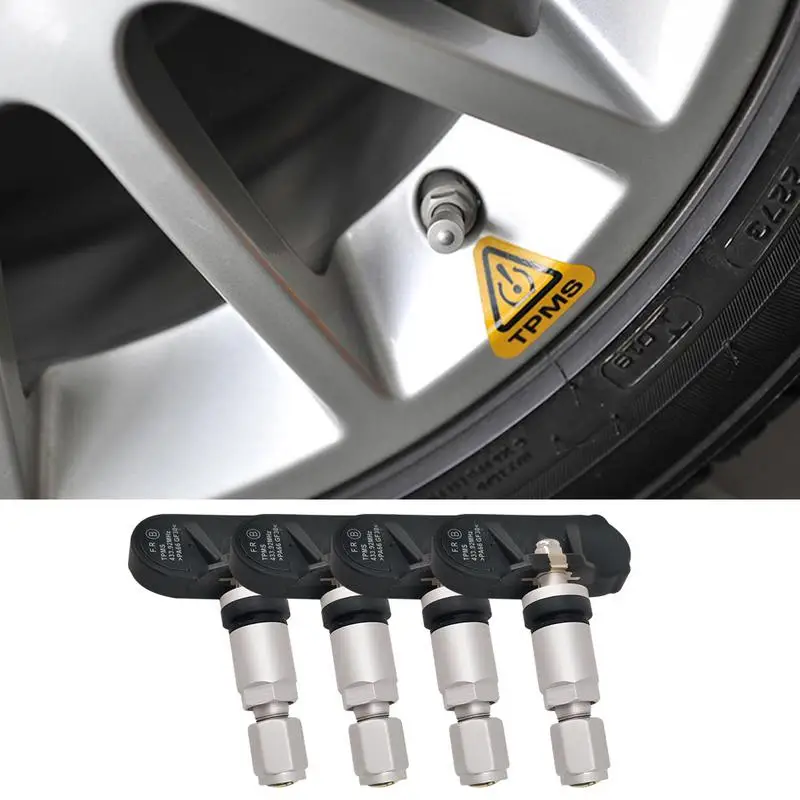 A special TPMS tool and additional time are also needed to check and reset the sensor system.
A special TPMS tool and additional time are also needed to check and reset the sensor system.
{{storeNumber}}
{{storeName}}
{{link-icon "Call Us" mobileCallLink null "call-cta"}} {{link-icon "Directions" directions "_blank" "directions-cta"}}
{{address}}
{{city}}, {{state}} {{zip}}
{{#if activeFlag}} {{#ifCond mystore "or" myPreferredStore}} {{#ifCond storeType 'eq' "TPL"}}
*Call store for appointment {{phone}}
{{else}} {{#if onlineAppointmentActiveFlag }}
{{#if myPreferredStore}}
{{else}}
*Call store for appointment {{phone}}
{{/if}} {{/ifCond}} {{else}} {{#ifCond storeType 'eq' "TPL"}}
*Call store for appointment {{phone}}
{{else}}
Schedule Appointment {{#if onlineAppointmentActiveFlag}} {{else}}
*Call store for appointment {{phone}}
{{/if}}
{{/ifCond}} {{/ifCond}} {{else}}
*Temporarily Closed Due To: {{temporarilyClosedReason}}
{{/if}} {{#if isMilitaryStore}}
*This location is on an active US military base.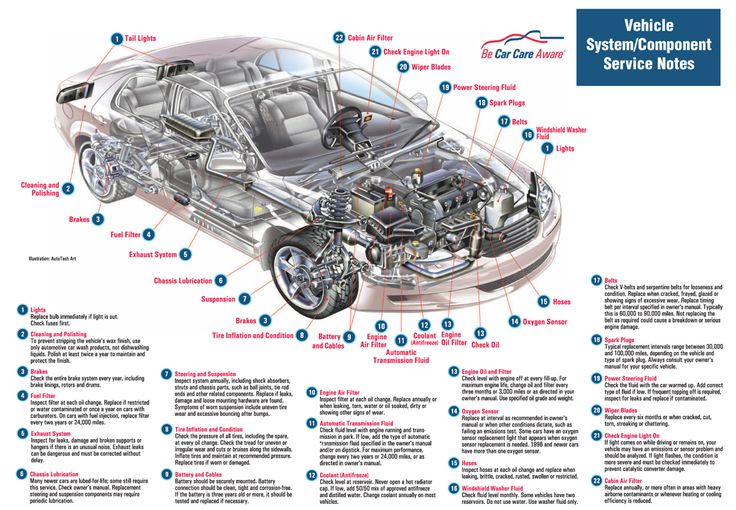 You may need military ID to access the location.
You may need military ID to access the location.
{{/if}}
In America and Europe, a tire pressure monitoring system is an indispensable element of a car. Most likely, in the near future the same rules will be adopted in Russia.
But even if this system does not become mandatory, nothing prevents it from being installed in a car if the standard TPMS is not provided by the manufacturer: it is much better to find out in time that the wheel is flat than to wait for sad consequences.
TPMS (tire pressure monitoring system) monitors changes in tire pressure: even a small decrease in pressure in one wheel increases fuel consumption, worsens car handling and increases tread wear.
Now the pressure control system is divided into systems of direct (direct) and indirect (indirect) directions - we will tell you in more detail what it is.
In direct measurement systems, sensors are placed on the valves of all wheels. They can be installed inside or outside. The sensor detects the level of pressure in the wheel and transmits information via radio to the control unit. Here, the accuracy of the readings plays a big role - you can even track a decrease in pressure by only 0.1 bar.
The "direct" system is more expensive than the "indirect" one, but it transmits information more accurately and faster. She, of course, has her own nuances: if you have to swap tires for even wear, then information about this will need to be entered into the control unit.
The so-called "indirect" TPMS is essentially a software extension for ABS: in its work it uses standard wheel rotation sensors. The system monitors changes in wheel speed and can diagnose tire pressure loss based on this information.
In this case, we are not talking about exact values, but only signals a significant deviation from the usual pressure - a significant deviation in this case is 0.3 bar, and a dangerous one - 0.5 bar.
"Indirect" systems may erroneously transmit a signal for a decrease in tire pressure also when:
Uneven load distribution
Frequent change from lane to lane
slippage
Sharp descents and ascents
But this can be adjusted, for example, by setting an alert delay. You can also reboot the system so that it adjusts to different tire pressures at startup.
The AIRLINE range includes 2 models of the "direct" system.
Tire pressure monitoring system TPMS BLACK ATP-MS-01 includes 4 sensors and a receiving module with a color LCD display. The sensors are mounted on the nipple of the car wheel, measure the pressure and air temperature in the tire and transmit information about the pressure value via radio to the display.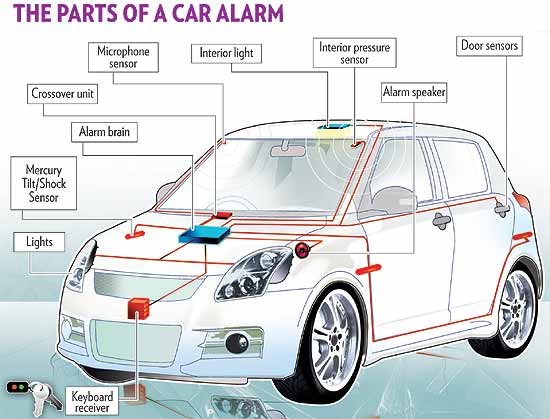 When the tire pressure changes, the system transmits information with sound signals and displays it on the display. The pressure and temperature thresholds are set in the display menu. The system can be installed independently - it does not require special skills.
When the tire pressure changes, the system transmits information with sound signals and displays it on the display. The pressure and temperature thresholds are set in the display menu. The system can be installed independently - it does not require special skills.
The receiving module is powered by the car's cigarette lighter socket, there is also a USB output for convenient parallel charging of the smartphone. The kit includes a receiver with a display, 4 external pressure sensors, 4 locknuts, a kit for mounting sensors, a warranty card and instructions. The operating temperature of the sensors is from -40°С to +125°С.
Tire pressure monitoring system TPMS wireless INSIDER SOLYAR ATP-MS-02 includes 4 sensors and a receiving module with a color LCD display. When the tire pressure changes, the system transmits information with sound signals and displays it on the display. The sensors are marked position, but the wheels can be swapped, everything is reconfigured.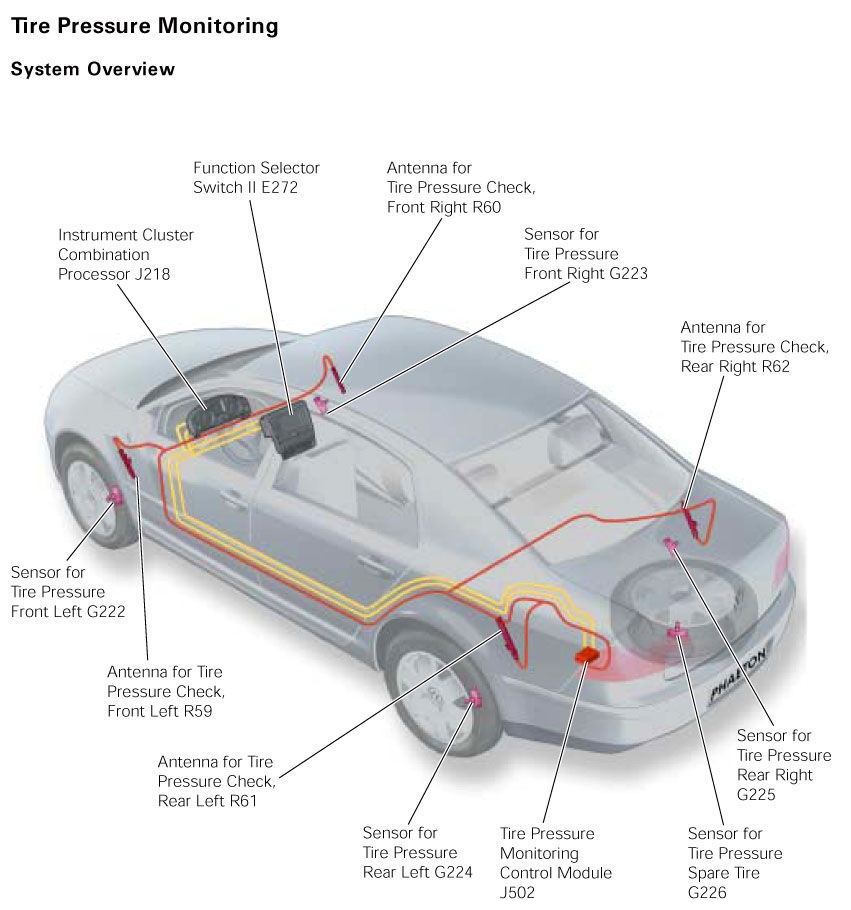 The operating temperature of the sensors is from -40°С to +125°С.
The operating temperature of the sensors is from -40°С to +125°С.
The kit includes a double-sided adhesive tape for fixing the receiving module on the dashboard of the car, it can also be mounted on a Velcro mat.
The receiver module is powered by a built-in lithium-polymer battery, which is charged by a built-in solar panel or a microUSB socket. The kit includes a receiver with a display, internal sensors, a USB-microUSB cable, double-sided tape, a warranty card and instructions. Tire fitting is required for installation, so we recommend contacting a service center for proper installation.
Photo: AutoView
You can only notice a flat tire when the car is stationary. To do this, however, the car must at least sometimes bypass in a circle. Do you do it often? Exactly. Only a very experienced driver is able to notice the “lack of air” on the go by the behavior of the car.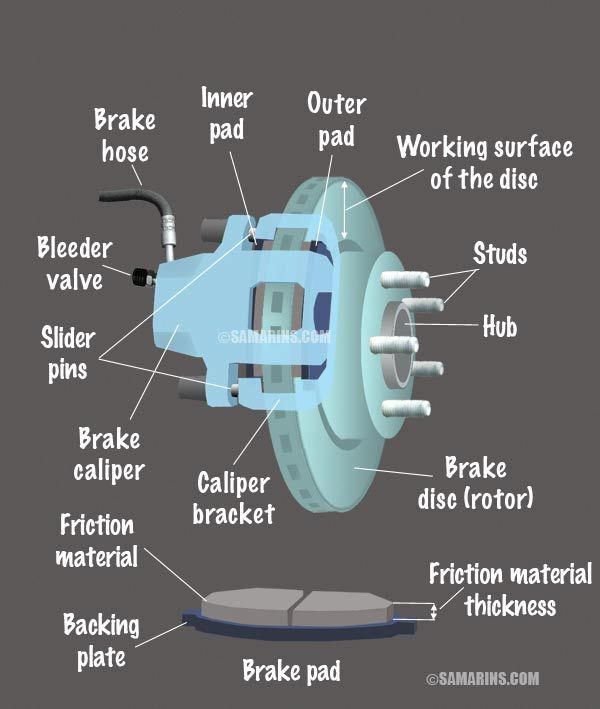 It is for this reason that modern cars are equipped with a tire pressure monitoring system.
It is for this reason that modern cars are equipped with a tire pressure monitoring system.
Eduard Raskin
How many times has it happened: a downstream neighbor rushes on a flat tire without even noticing the problem. The results of such a trip can be bad and very bad: at a minimum, you will have to replace an unevenly worn wheel, because it can simply burst at any time. The worst option is an accident caused by incorrect suspension operation and loss of controllability. And just a wheel flat!
To solve this “household” malfunction once and for all, automakers equip modern cars with a special tire pressure monitoring system. Previously, complex electronics were responsible for this function, which controlled and calculated revolutions, analyzed and let the driver know about problems.
Now everything is much simpler: one control unit and one sensor per wheel. The tire “blew” a little - the corresponding icon will light up on the instrument panel. Particularly "smart" cars can even show which particular wheel is "lack".
Photo: AvtoVzglyad
"Brains" only collect information and alert. The main work lies on the sensor itself, which is quite simple: a battery for autonomous operation, an electronic pressure gauge that allows you to calculate the pressure not only in motion, as it was before, but also on a stationary car, as well as a transmitter responsible for communicating with the head unit .
A sensor is installed instead of a conventional nipple. The device itself is very compact and incredibly resistant to the whims of our roads and drivers, because it is located inside the wheel, and only a plastic pipe remains “on the street”, which can only be torn off or damaged by a direct hammer blow. The only known method of damaging tire pressure sensors was and remains tire fitting, when an inattentive master simply breaks the device during tire uninstallation. The recipe for this situation is simple: warn about the presence of the device.
The correct factory-set tire pressure is indicated on a plate in the arch of the driver's door of any car.